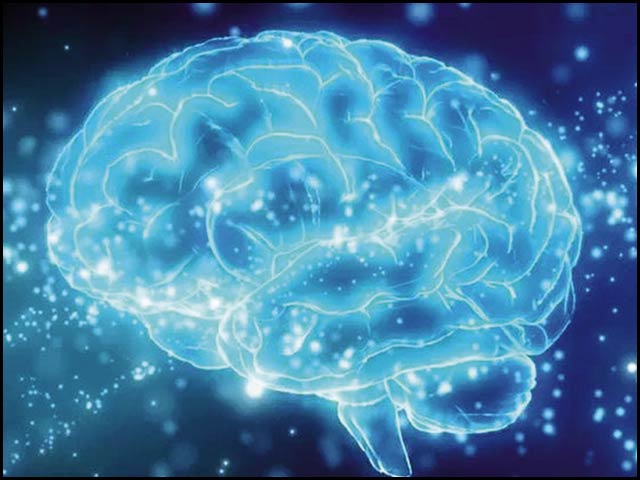The human mind is powerful as well as mysterious. The brain weighs about one and a half kilograms, but it has about 8600 million neurons that make up its outer layer, known as ‘grey matter’.
This number is equal to the number of stars in the universe. Neurons are connected to each other by synapses (through which electrical impulses are transmitted). The number of synapses in the human brain is approximately 15 zeros followed by one.
Scientists know that connections between neurons are made through synapses, but they are unable to determine how all the information that reaches the brain is generated, where it is stored, and how it is processed. goes The enigma between mind and memory is called the ‘uncertain zone’ or the place of uncertainty.
This is the part where there are more questions than answers. The Swiss neuroanatomist Auguste-Henri Forel said of this part in 1877, “This is a place about which nothing can be said with certainty.” The situation remains the same today, nearly 150 years later.
Despite new discoveries in medicine and technology, no one fully understands the incertain zone. However, experts have evidence to prove that this place in the human body monitors memory. Although this area has not been extensively researched, recent research has yielded some information about this important but neglected area.
What is the evidence for the incertain zone?
This area in the gray matter is actually a layer of neurons between the thalamus and hypothalamus, says Dr. Tau, a neuroscience expert at the University of Southern California.
Four more sites have been identified in the Uncertain Zone. All have their own role in which attention produces involuntary movements such as awareness. Dr. Tao says that the human body can sleep, feel pain and learn with the help of this part.
Recent research in mice suggests that this part also plays an important role in long-term memory. But how does it work, how does it communicate with other parts of the brain to make movements?
Not much information about it. For example, in Parkinson’s patients, the same area is usually targeted for stimulation. However, scientists are not sure why this part has the ability to control the symptoms of the disease.
Why is it difficult to understand?
Dr. Tao explains that the incertin zone is a thin membrane found deep in the brain, so it is difficult to study it in living people.
According to experts, the chemical and cellular structure of this membrane is complex. Each location has a different function and up to twenty different neurotransmitters are involved in each function of the neurons, making it difficult to analyze in detail.
Dr. Tao says that its communication process with other parts of the brain is also very complex. From the cerebral cortex to the spinal cord, the incertin zone interacts with almost every center of the neural circuit and is therefore involved in a variety of movements.
What evidence have experts found?
Research in mice by the Max Planck Institute for Brain Research and the University of Freiburg in Germany suggests that the incertain zone may play a role in attention span and long-term memory. Experts found that it is connected to the cerebral neocortex (the largest part of the brain).
In humans, the neocortex is thought to store long-term memory. It is responsible for functions such as thought, consciousness and language. However, it is not known how the memory is received and stored.
Internal and external signals
The brain receives information from the senses through external and internal signals to form new memories. Information related to past experiences is already there. For this, neurons exchange signals that activate or deactivate certain parts of the brain.
Previous research has looked at which brain regions are activated in learning or memory formation. But this new study looked at emerging inactivation signals in the incertain zone. That is, the experts found that the incertin zone plays a role in learning and memory by inactivating rather than inactivating neurons.
In the uncertain zone, a network of inactivation forms that terminates certain connections so that activation connections elsewhere can be effective. It is a system similar to traffic lights in which the green and red lights communicate with each other to determine which road to stop so that traffic can flow on the other road.
“This is exciting research,” says Dr. Tao. This research provides new information about learning and memory formation in the nervous system.” According to the authors of the study, by understanding the memory system, we may be able to treat diseases such as memory loss, anxiety and Parkinson’s.
The researchers also showed the potential for positive effects on artificial intelligence and software development research. They hope other researchers will be able to look at this evidence to help solve the mystery of the Uncertain Zone. (Thanks to BBC Urdu)
(function(d, s, id){
var js, fjs = d.getElementsByTagName(s)[0];
if (d.getElementById(id)) {return;}
js = d.createElement(s); js.id = id;
js.src = “//connect.facebook.net/en_US/sdk.js#xfbml=1&version=v2.3&appId=770767426360150”;
fjs.parentNode.insertBefore(js, fjs);
}(document, ‘script’, ‘facebook-jssdk’));
(function(d, s, id) {
var js, fjs = d.getElementsByTagName(s)[0];
if (d.getElementById(id)) return;
js = d.createElement(s); js.id = id;
js.src = “//connect.facebook.net/en_GB/sdk.js#xfbml=1&version=v2.7”;
fjs.parentNode.insertBefore(js, fjs);
}(document, ‘script’, ‘facebook-jssdk’));


